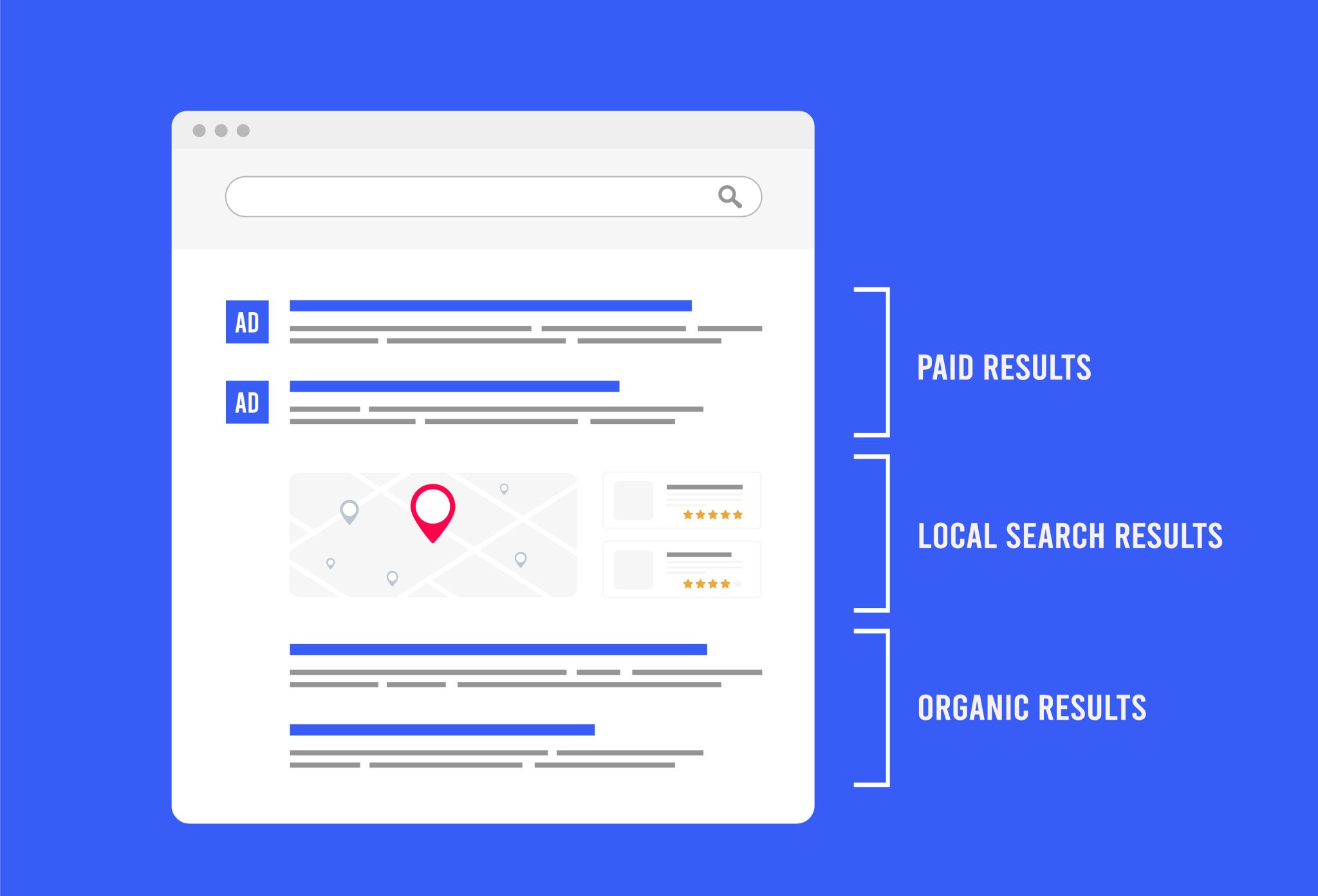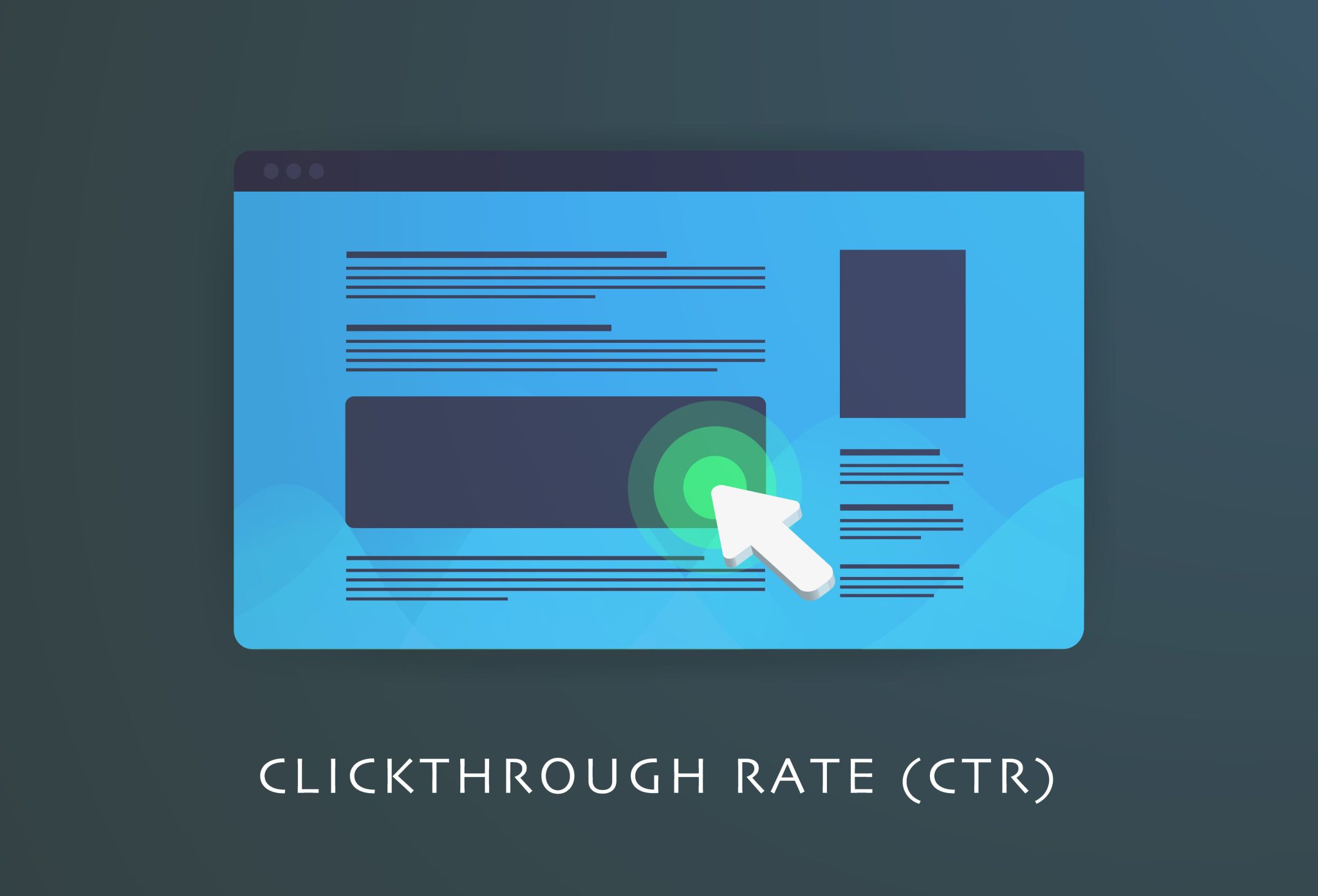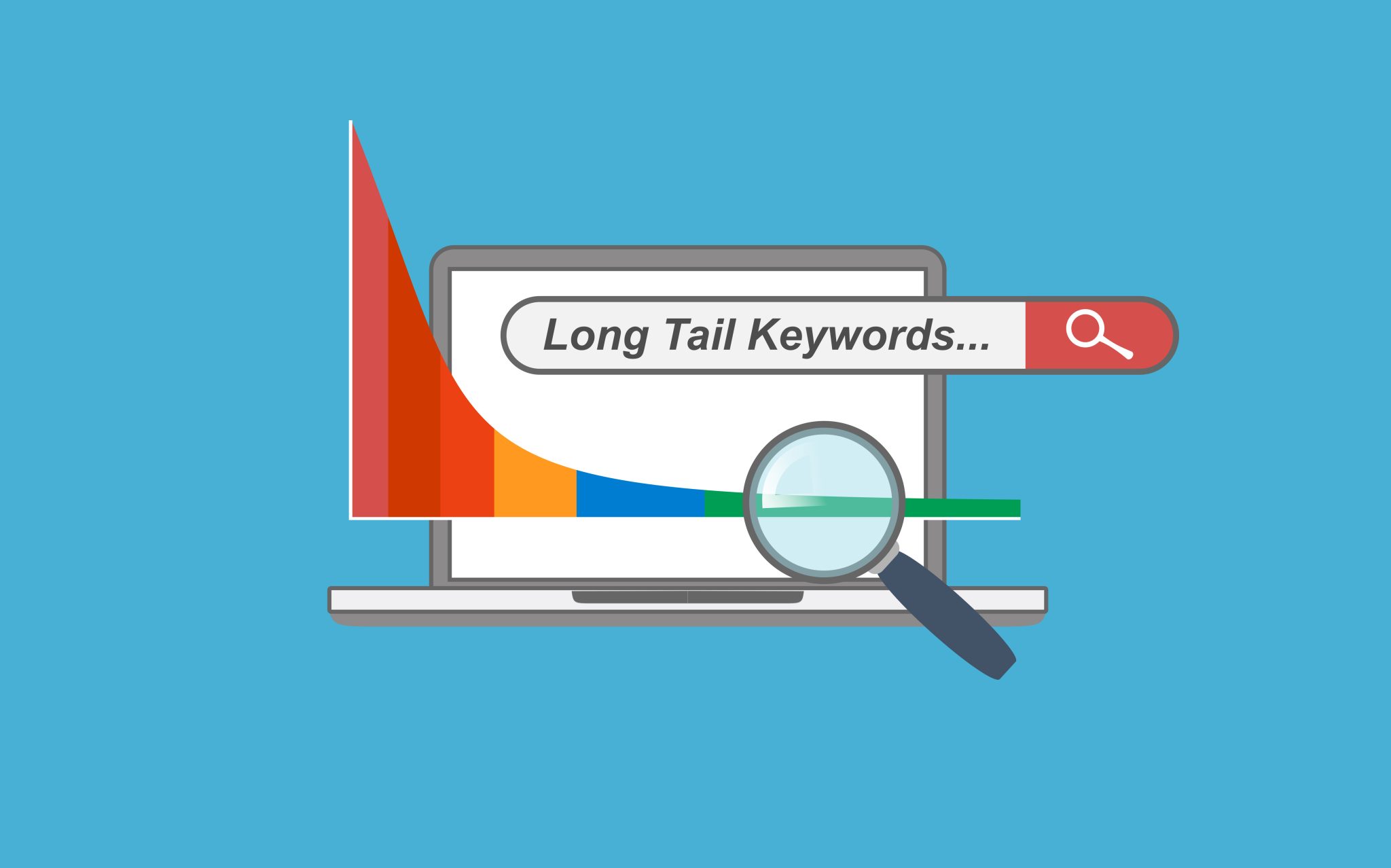A Data-Driven Guide to Google CTR by Position in 2024
Knowing the click-through rates (CTR) for each SERP position can be a game-changer if you want to maximize your visibility on Google. In this article, we’ll directly address the complex data surrounding Google CTR by position, offering insight into how each rank impacts user engagement and what you can expect as you climb or fall in the rankings.
Key Takeaways
- A superior rank on Google’s Search Engine Results Pages (SERPs) usually correlates with a higher click-through rate (CTR), emphasizing the importance of strategic SEO to secure top positions for increased website visibility.
- While organic search results tend to result in higher CTR due to perceived credibility, paid search results are essential for immediate brand visibility and traffic, and a strategic balance between the two can maximize overall site performance.
- The average click-through rate for Google SERPs varies by position and industry, indicating that maintaining a high SERP position, keeping up with Google’s algorithm updates, and targeting with long-tail keywords are crucial for boosting CTR and website traffic.
Understanding Google Click-Through Rates by SERP Position

Every click in the digital world is significant. As your website garners more clicks, your CTR rises, increasing your content’s visibility. Google’s organic search results play an essential role in this process. A superior SERP position usually correlates with a greater probability of users clicking on the website link. Therefore, boosting your website’s CTR requires a deep understanding of Google’s search results pages.
The factors influencing your website’s CTR extend beyond the realm of organic search results. The dynamics of organic and paid search results impact user behavior on Google SERPs, and their influence on ad clicks and conversions cannot be overstated. Achieving a balance between the visibility of paid search results and the credibility of organic results is a delicate task.
The Impact of Search Engine Results Pages (SERPs)
The influence of SERPs on CTR is significant in the Google search environment. SERPs are the outcome provided by Google when a user submits a search query, encompassing:
- Organic results
- Paid Google Ads results
- Featured Snippets
- Other features
As the stage where your website makes its first impression, SERPs directly impact your CTR.
A superior rank usually leads to a higher CTR, underscoring the need for businesses to craft strategic SEO efforts to secure leading positions.
The Dynamics of Organic vs Paid Search Results
Just as a coin has two sides, so do Google’s search results – the organic and the paid. Users trust Google’s organic search results and the natural rankings determined by Google’s algorithms, which bolster your brand’s credibility and result in higher CTRs.
However, paid search results, being an advertisement tied to the search query, may not draw as many clicks as organic results, but it is vital in boosting brand visibility and driving traffic.
The Role of SERP Features in CTR
SERP features – the additional elements that Google includes in search results – are the game-changers in the race for clicks. Whether it is a Featured Snippet offering a quick answer to a user’s query, a Knowledge Panel providing a brief overview of a topic, or an image or video carousel displaying visual content, these features capture user attention and can impact your website’s CTR significantly.
The Anatomy of a Typical Google Search Page

Transitioning from the idea of CTR and SERPs, we will explore in detail a standard Google search page. It’s more than just a list of websites; it’s a carefully curated collection of information designed to best answer a user’s query. The Google search results pages predominantly include paid advertisements positioned at the top, with organic results presented below the ads. This arrangement is designed to offer users a mix of options, balancing immediate, paid solutions with more organic, potentially in-depth answers.
The Google search page, as well as other Google search pages, also boasts an array of SERP features, including:
- Featured Snippets
- Knowledge Panels
- Video Carousels
- Image Packs
These features transform the conventional search experience by offering more compelling and informative content directly within the SERP. They shape user interactions with the search page significantly, thereby influencing the CTR of the listed websites.
Understanding Google’s Search Engine Presents
Google’s presentation of search results, including local search results, is not a one-size-fits-all approach. Several factors cause this variation, such as the type of device used, the user’s search intent, and their past behavior. For instance, mobile SERPs present a more simplified interface, focusing on rich results, while desktop SERPs provide a more extensive layout.
Google’s algorithm also takes into account search intent, striving to deliver the most relevant and valuable content that aligns with the user’s search intent.
The Interplay Between Desktop and Mobile Searches
Google’s search environment is diverse, accommodating different devices and user preferences. The interplay between desktop and mobile searches is critical to this diversity. Mobile search experiences a decrease in CTR between positions #1 and #2, while desktop shows a steeper decrease.
However, the CTR levels off after position #5 and remains relatively steady from position #9 onwards. This indicates how the device used for search can shape the user’s interaction with the SERP and the subsequent CTR.
Key CTR Benchmarks for Google Ranking Positions

While being aware of your CTR is crucial, it’s equally important to understand how it compares with key benchmarks. These benchmarks serve as a guide, helping businesses evaluate their website’s performance in Google search results and identify areas for improvement. For instance, the typical CTR for the primary organic search result in Google’s SERP varies, with the #1 result having an average of 27.6% and occasionally reaching as high as 39.8%. Position two typically experiences a CTR of 15.8%.
Moreover, the CTR is not static; it fluctuates as you move up or down in the SERP positions. A website can experience an average increase of 32.3% in its CTR when it moves up one position in Google’s SERPs. This highlights the critical importance of securing a high-ranking position in SERPs to boost CTR and website traffic.
What Does a High CTR Indicate?
A high CTR is more than a bragging right; it signifies your website’s success. A high CTR reveals that a substantial proportion of users find your content engaging and relevant, as demonstrated by the high level of interaction through clicks. This translates into more traffic for your website and enhances your website’s SEO performance, leading to higher rankings in search results.
Average Click-Through Rate: Expectations vs Reality
While striving for a high CTR is essential, setting realistic expectations in line with industry standards and search trends is equally important. The average CTR for Google SERPs varies across different industries, generally around 1.91% for search ads and ranging from 6-7% for organic search results.
It’s also noteworthy that competition can lead to a reduction in the CTR for Google ads, with a decrease of up to 2% between the first and second positions and another 2% between the second and third positions.
Strategies to Elevate Your Web Page Summaries in Search Results

In the expansive sea of search results, differentiation is critical. One way to do this is by elevating your web page summaries in search results. The strategies to achieve this revolve around two critical elements of your webpage: meta descriptions and title tags. Meta descriptions provide a concise, persuasive summary of the web page’s content, enticing users to click the link. A compelling call-to-action within the meta description can notably boost the probability of a user clicking through.
Conversely, title tags serve as your webpage’s headlines. They should:
- Be unique for each page
- Contain a primary keyword
- Accurately reflect the content
- Be designed to be enticing to the reader
Crafting Compelling Meta Descriptions
Meta descriptions are like appetizers; they whet the user’s appetite and set the stage for the main course – your webpage content. Crafting compelling meta descriptions is, thus, a subtle art.
It involves:
- Limiting the length to 155 characters
- Employing an active voice with actionable language
- Incorporating a call to action
- Utilizing the focus keyphrase
- Crafting unique descriptions for each page
- Including pertinent information about the content
Optimizing Title Tags for Maximum Impact
Title tags are the first thing a user sees in search results, making them an invaluable piece of real estate in your SEO strategy.
A well-optimized title tag:
- Is of optimal length
- Is unique for each page
- Contains a primary keyword
- Accurately reflects the content
- Is designed to be enticing to the reader
Implementing these strategies can enhance the appeal of title tags to users and subsequently boost CTR.
Leveraging Long-Tail Keywords to Boost Organic CTR

As we venture further into the world of SEO, long-tail keywords surface as potent instruments to enhance organic CTR. These are highly specific search queries with relatively low search volumes. They consist of longer and more specific keyword phrases that are typically used by visitors when they are closer to a point-of-purchase or have a clear intent.
Leveraging long-tail keywords enhances:
- Organic click-through rates by augmenting organic traffic,
- Attaining top positions in search engine results,
- And enhancing conversions through their specificity and alignment with particular user intentions.
Identifying and Targeting Your Niche with Long-Tail Keywords
Long-tail keywords function as precision tools, allowing you to:
- Target your niche with unrivaled precision
- Offer a higher level of specificity compared to generic terms
- Allow for targeted outreach to niche demographics
- Have lower competition levels in comparison to generic keywords
The Correlation Between Long-Tail Keywords and Higher CTR
The specificity and high targeting of long-tail keywords result in a higher organic CTR, improved Quality Score, and decreased irrelevance in searches. This can effectively mitigate the impact of CTR decreases from paid ads, leading to a win-win situation for your website’s visibility and user engagement.
The Influence of Paid Search on Organic CTR
Paid search serves as a turbo boost in your SEO strategy, offering instant visibility and targeted reach. However, it’s not without its trade-offs. The relationship between paid search and organic CTR is intricate. Solid organic search results can enhance the CTR for related pay-per-click (PPC) ads on the same SERP.
Conversely, paid search can enhance organic campaign results by:
- Increasing brand recognition and familiarity
- Primarily emphasizing immediate visibility through investment
- Having an indirect impact on organic CTR
- Enhanced brand recognition from paid ads may lead to higher organic CTR for certain searches, although the precise effect can vary.
Evaluating the Trade-Offs Between Paid and Organic Search
Although paid search provides immediate visibility, it comes at a cost. On the other hand, organic search results, the natural rankings determined by Google’s algorithms, are trusted by users and enhance your brand’s credibility, leading to higher CTRs. Prioritizing organic search results can yield various advantages, such as:
- Cost efficiency
- Higher click-through rates
- Enhanced brand visibility
- A perception of editorial integrity that attracts loyal and engaged visitors
Strategies to Counteract the CTR Drop from Paid Ads
To mitigate a decrease in CTR from paid ads, it is crucial to implement a range of strategies, such as:
- Improving keyword targeting
- Optimizing ad copy
- Testing various ad variations
- Ensuring ad relevance and innovation
It’s all about finding the optimal balance between paid and organic search, ensuring they complement each other rather than compete.
The Algorithm Advantage: Aligning with Google’s Latest Trends
In the continuously changing landscape of Google search, keeping pace with the latest algorithm trends is essential. Google updates its search algorithms approximately 500-600 times annually, with notable updates like the October 2023 Core Algorithm Update and other confirmed algorithmic updates.
These updates refine the process of ranking web pages, with the goal of presenting the most relevant results to users’ search queries. They have brought about notable changes in CTR, especially beyond the first page of search results, highlighting the importance of maintaining a high SERP placement for improved visibility and CTR.
Keeping Pace with Google Algorithm Updates
Staying abreast of Google’s algorithm trends calls for alertness and flexibility. Businesses can monitor these updates using tools such as:
- AIOSEO
- Search Console
- Google Analytics
- Semrush
- MozCast
Understanding the implications of each specific update can help businesses revise their SEO strategies, ensuring that their rankings and traffic remain consistent despite the changing algorithms.
How SERP Position Influences CTR in Light of Algorithm Shifts
With the continuous evolution of Google’s algorithms, the impact of SERP position on CTR becomes progressively crucial. SERP positioning is influenced by Google’s algorithm through the evaluation of web page relevance to the search query, with the goal of presenting the most relevant results. Recent updates have refined this process, resulting in notable changes in click-through rates.
Summary
In the digital marketing landscape, understanding Google’s Click-Through Rate (CTR) by position is not just a strategy; it’s a necessity. It’s the key to unlocking the full potential of your online presence, guiding you through the vast landscape of Google’s search results pages. A high CTR is a testament to the quality and relevance of your content, a sign that your website isn’t just seen but visited and valued.
From exploring the dynamics of organic and paid search results to delving into the anatomy of a typical Google search page, from leveraging long-tail keywords to understanding the influence of Google’s algorithm updates, we’ve embarked on a comprehensive journey into the world of Google’s CTR. Understanding these aspects and implementing the right strategies can help businesses maximize their online visibility and reach their target audience effectively.
Frequently Asked Questions
What is the click-through rate of Google position?
The click-through rate of Google’s positions varies depending on the ranking position, with higher positions receiving higher CTR.
Which search position receives the highest CTR?
Ranking #1 receives the highest CTR, with a typical CTR of 39.8%, more than double the CTR for the 2nd position and nearly four times the CTR for the 3rd position.
What is a good CTR on Google?
A good click-through rate (CTR) on Google is generally considered to fall between 3-5%, although some industries may aim for higher rates, such as 7-9% or even 10-12% in certain sectors. Aim for a CTR above these averages to achieve better performance.
What is the average CTR for Google organic?
The average CTR for Google organic is 1.51% for all industries, with the automotive industry having a CTR above 3%. In addition, the #1 organic result on Google has an average CTR of 27.6%, making it 10x more likely to receive a click compared to a page in the #10 spot.
What are the differences in CTR patterns between desktop and mobile searches?
In conclusion, mobile search sees a CTR decrease between positions #1 and #2, while desktop shows a steeper decline. Additionally, the CTR levels off after position #5 and then remains steady from position #9 onwards.

